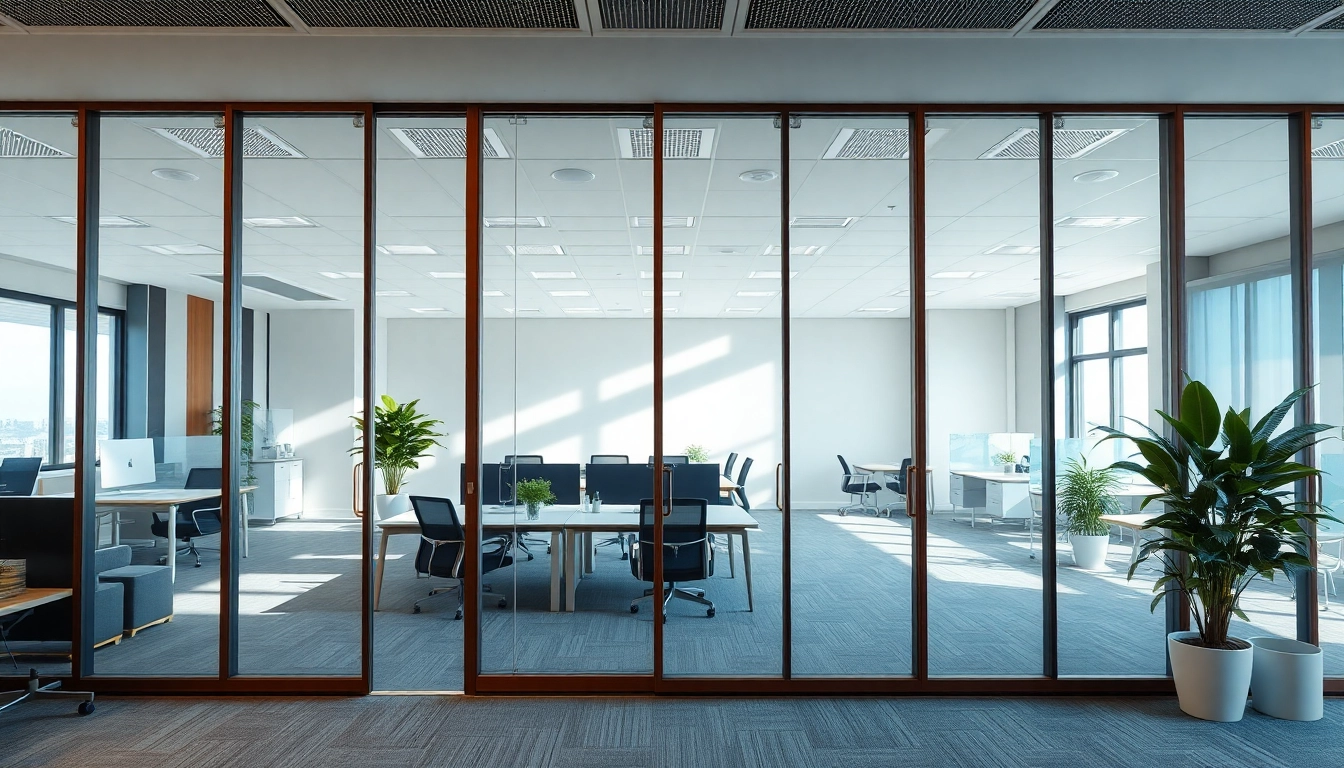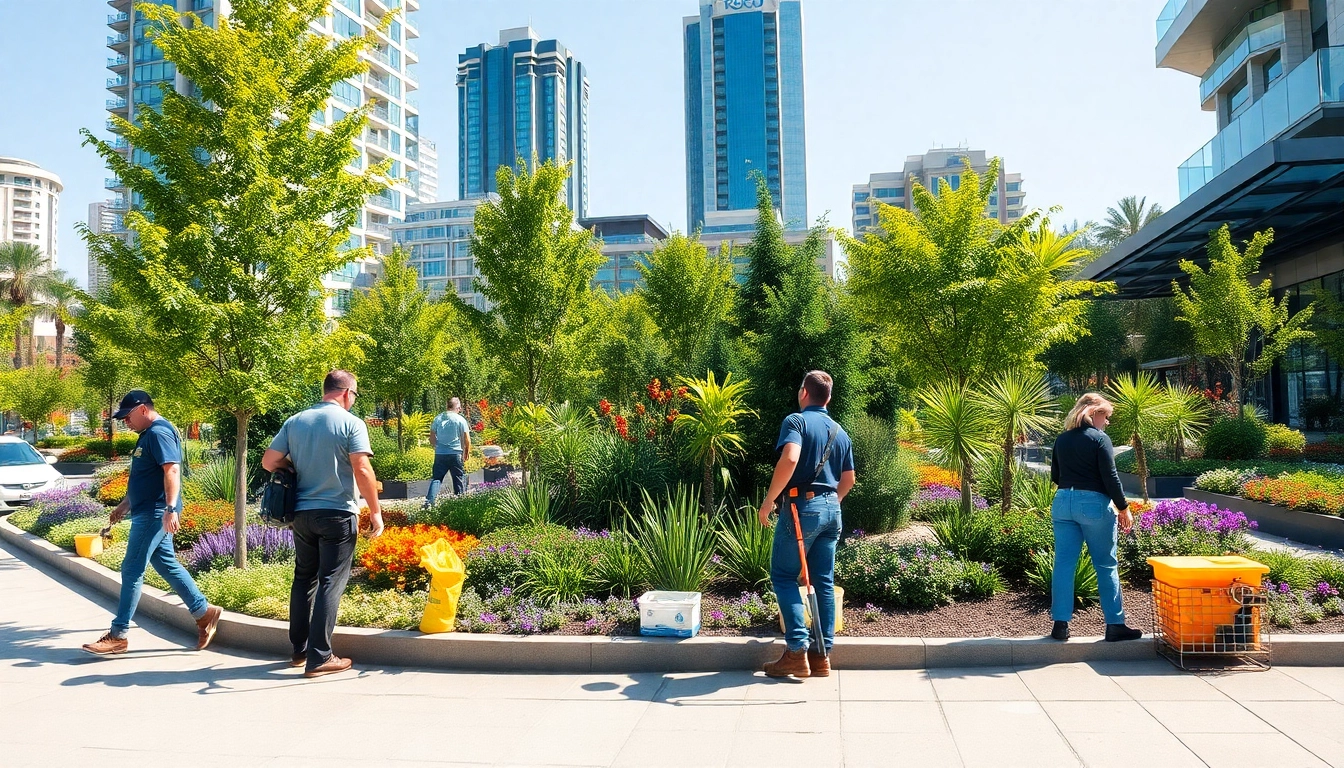Understanding the Benefits of Folding Partition Walls
Folding partition walls have emerged as an innovative solution for maximizing space utilization in a variety of settings. Whether in commercial buildings, educational institutions, or residential homes, these versatile structures allow for rapid reconfiguration of spaces. They are especially adept at transforming open layouts into defined areas, with one of the most compelling advantages being their adaptability. Not only do they offer aesthetic appeal, but they also come with numerous practical benefits. For further insight into a Folding Partition Wall, let’s delve deeper into the specifics that make them an essential component of modern interior design.
1.1 Space Optimization in Various Settings
Folding partition walls are particularly advantageous in environments where space is at a premium. In commercial settings such as offices, retail spaces, and restaurants, these walls enable fluidity and flexibility, allowing business owners to configure the space as per their operational needs. For example, a café can utilize folding partitions to create an intimate dining atmosphere during peak hours, while reverting to a more open layout during quieter times. This adaptability allows for better customer experience and operational efficiency.
In educational and training environments, folding partitions enhance learning by creating small group areas or breakout rooms, which can be particularly effective during workshops and seminars. This flexibility in space usage also reduces unnecessary costs associated with maintaining larger, underutilized areas.
1.2 Enhancing Acoustics and Privacy
One of the standout features of high-quality folding partition walls is their ability to improve acoustical control. These walls can significantly dampen noise across spaces, creating environments that foster concentration and privacy. In offices, where collaboration is key yet silence is also crucial for productivity, employing acoustic partitioning can ensure employees work efficiently without distractions.
Similarly, in venues like conference centers, folding partitions can facilitate simultaneous events without sound bleeding between rooms. This is essential for maintaining professionalism and upholding the quality of presentations or meetings occurring in adjacent spaces.
1.3 Cost-Effective Solutions for Flexibility
Folding partition walls represent a cost-effective investment. They not only reduce the ongoing expenses associated with constructing permanent walls but also afford the flexibility necessary in today’s dynamic environments. The installation of folding partitions is generally quicker and less labor-intensive than traditional wall construction, translating into lower overall costs. This feature is especially appealing to startups and small businesses looking to optimize their resources while scaling operations.
Moreover, because they can be reconfigured as needed, businesses avoid the costly renovations that would typically come with changing space requirements. This adaptability translates directly into long-term savings, making folding partitions an economical option over time.
Types of Folding Partition Walls
2.1 Traditional vs. Modern Designs
Folding partition walls come in various designs that cater to diverse aesthetic preferences and operational needs. Traditional designs often incorporate wood or fabric finishes, providing a classic look that seamlessly blends with established decor. These types are particularly desirable in settings such as hotels or high-end offices where maintaining a certain ambiance is paramount.
In contrast, modern designs take advantage of innovative materials like glass and lightweight metal frames, creating a sleek and contemporary aesthetic. Glass folding partitions not only serve to divide spaces but also enhance natural light flow, making spaces feel larger and more open. This design is frequently used in tech startups and creative agencies that prioritize bright, inspiring work environments.
2.2 Materials Used in Folding Partition Walls
The materials employed in the construction of folding partitions significantly influence their performance, durability, and appearance. Common materials include:
- Wood: Offers warmth and is easy to customize, making it a staple in residential and traditional commercial spaces.
- Fabric: Ideal for acoustic applications; it can contribute to soundproofing and is available in several colors and patterns.
- Glass: Provides transparency and modernity, allowing spaces to retain an open feel; ideal for offices and meeting rooms.
- Metal: Lightweight and durable, making it suitable for high-traffic environments requiring robust solutions.
Consideration of these materials impacts not only the aesthetic but also the functionality of the partitions in terms of sound insulation, thermal efficiency, and long-term maintenance.
2.3 Customization Options for Unique Needs
Folding partitions can be highly customized to cater to specific needs, about both functionality and aesthetics. This customization can include a variety of finishes, colors, patterns, and sizes to fit the unique dimensions of the space they are intended to serve. Business owners can opt for branding or specific artwork to be printed on the panels, which enhances corporate identity in office settings or promotes a unique atmosphere in hospitality venues.
Additionally, features such as integrated lighting, electronic control systems, or specialized locking mechanisms can be incorporated for increased usability and security. Custom-designed folding partition walls can significantly enhance both the functionality and visual appeal of a space.
Installation Process of Folding Partition Walls
3.1 Key Steps to Ensure Proper Installation
The installation of folding partition walls requires precision and an understanding of the space they will occupy. Key steps include:
- Assessment: Evaluate the area for sizing and space requirements, considering factors such as ceiling height and floor surface.
- Framework Preparation: Prepare the necessary framework, ensuring all structural elements are secure and compliant with building codes.
- Assembly: Follow manufacturer guidelines for assembling the panels, ensuring alignment and stabilizing each section as it is installed.
- Testing: Once installed, test the functionality of the folding mechanism to ensure smooth operation and accessibility.
3.2 Hiring Professionals vs. DIY
While DIY installations might seem appealing from a cost-saving perspective, hiring professionals can often ensure a more efficient and accurate install. Professional installers come equipped with experience and expertise, reducing the risk of mistakes that could lead to costly adjustments later. Additionally, many manufacturers offer warranties that only apply if professional installation is conducted.
Conversely, those with carpentry or design experience might opt for a DIY approach, especially for smaller or less complex projects. For such individuals, a DIY installation can be an excellent opportunity for personalization and direct involvement in the design process.
3.3 Maintenance Tips for Longevity
To ensure the longevity of folding partition walls, regular maintenance is crucial. Here are several maintenance tips:
- Regularly inspect tracks and brackets for wear and tear, ensuring they are free from debris.
- Clean surfaces routinely with appropriate cleaners that are not abrasive, helping to maintain their appearance and functionality.
- Address any operational issues immediately, such as sticking or misalignment, to prevent further wear.
- Consider scheduling professional maintenance annually for more complex systems.
By adhering to these maintenance tips, users can extend the lifespan of their folding partition walls and greatly enhance their value over time.
Applications of Folding Partition Walls
4.1 Ideal Uses in Commercial Properties
Folding partition walls are exceptionally beneficial in commercial properties because of their flexibility. In office environments, these partitions can transform open spaces into collaborative team rooms or individual workspaces, adapting to the varying needs of employees. Retail spaces can utilize folding partitions to created dedicated areas for promotions or seasonal sales without the need for permanent construction.
In educational settings, they are useful for dividing classrooms for different activities or in creating temporary spaces for testing and assessments. Hospitals and clinics benefit as well, using folding partitions to create private consultation areas that can be adjusted as patient volume changes.
4.2 Benefits for Residential Spaces
In residential spaces, folding partitions can help homeowners maximize their square footage more effectively. They can provide division within large rooms, such as a living room that needs to function as both a lounge and a study. This flexibility can enhance the functionality of spaces while still promoting an open-concept feel when walls are retracted.
Homeowners often appreciate the privacy that folding partitions can afford, particularly in shared living arrangements. They also allow for unique designs that can complement home decor and improve the overall aesthetic of a residence.
4.3 Innovative Uses in Public Venues
Public venues, such as community centers or convention halls, benefit from the use of folding partitions for dividing large spaces into manageable sections. This makes it easier to host concurrent events, allowing for more efficient use of space and resources.
In the hospitality industry, folding partitions can be instrumental in accommodating large gatherings or private parties, offering the versatility necessary to attract a broader range of clientele. With the option to create separate dining spaces or meeting rooms, establishments can cater to diverse needs without compromising service quality.
Comparing Folding Partition Walls with Other Room Dividers
5.1 Advantages Over Fixed Walls and Screens
Unlike fixed walls or traditional room dividers, which limit flexibility and can often be cumbersome, folding partition walls provide adaptable solutions that can be modified easily based on the needs of the moment. They are less permanent, allowing spaces to evolve based on usage requirements without substantial renovation costs.
Furthermore, folding partitions can be designed to provide sound isolation, unlike regular room screens that may allow noise to pass through. This adequate sound control adds to their functionality, especially in environments needing varying acoustics.
5.2 Cost and Space Considerations
When comparing costs, folding partition walls generally represent a more economical choice than traditional construction methods. Fixed walls can require significant investments in materials and labor, along with potential disruptions during installation.
In terms of space considerations, folding partitions excel as they can be expanded or contracted based on how the space is being used at any given time. This ability allows for greater utilization of available square footage and can lead to significant savings in managing space.
5.3 Performance Metrics to Evaluate
When selecting folding partition walls, it’s important to evaluate various performance metrics to ensure they meet specific requirements. Key performance indicators include:
- Sound Isolation: Check STC (Sound Transmission Class) ratings to assess noise reduction capabilities.
- Durability: Evaluate the construction material’s wear resistance under high-use conditions.
- Ease of Use: Ensure the mechanisms for opening and closing are intuitive and straightforward.
- Aesthetic Appeal: Consider how well the design fits with the overall decor and functional needs of the designed space.
By focusing on these performance metrics, customers can tailor their selection to best meet the unique demands of their environments.



